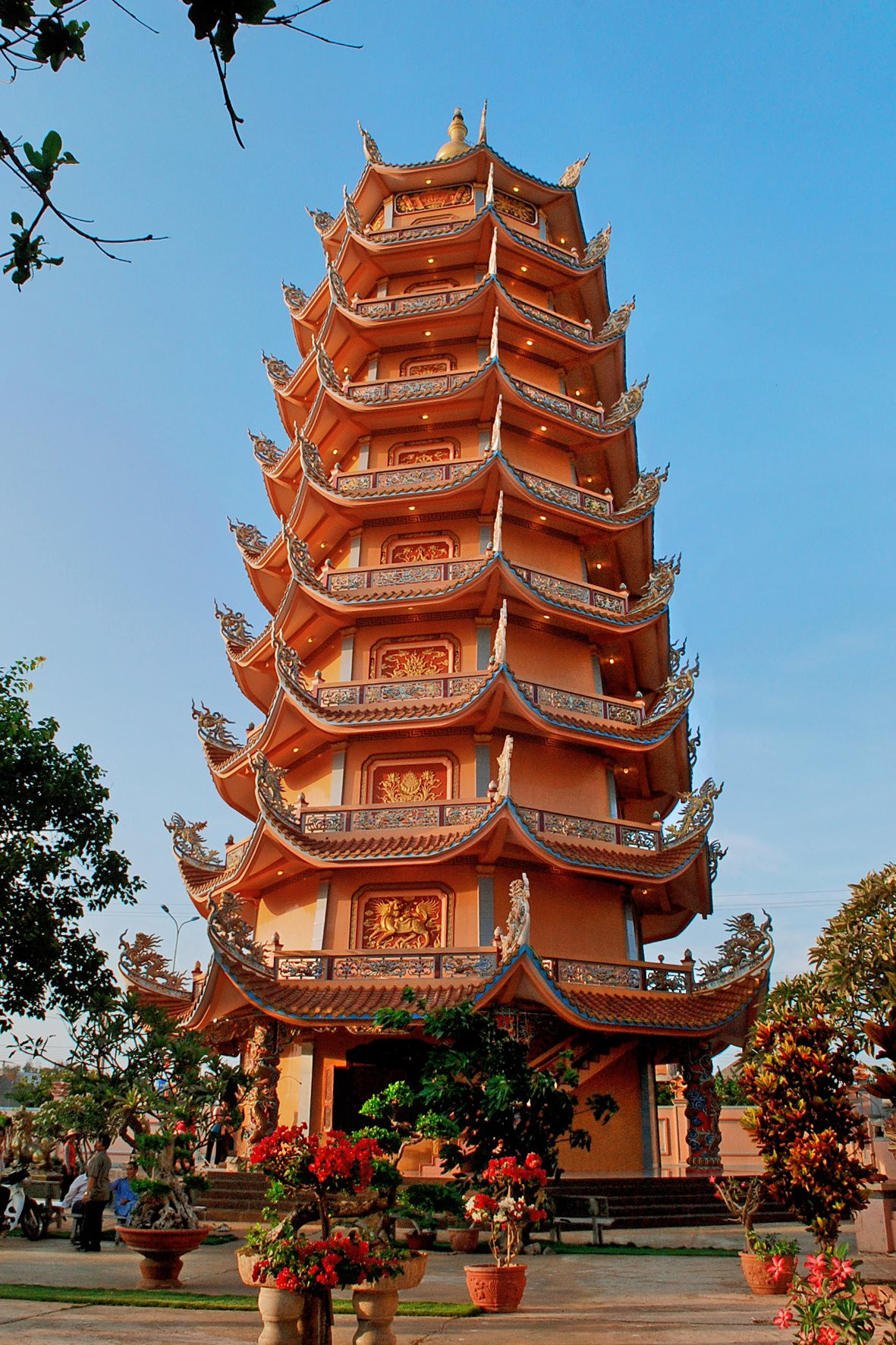At that time, at Hon Tranh Strait (Phu Quy) which is near the pagoda, people discovered a large "sacred stone" floating on the water and thought this was a good omen. Then the Buddhists carried "the "sacred stone" back to the temple. After that, the "spirit stone" was carved into a statue of Master Shakyamuni (300 kg in weight and 121 cm in height). The place where this "sacred stone" appears is called "Buddha Pond" by local people in Hon Tranh. Later, through many renovations, in 1992 the pagoda became a unique architectural complex in Phu Quy.


View of Linh Quang Pagoda
Currently, Linh Quang Pagoda is a spacious and majestic pagoda with many impressive ancient features. The campus includes main areas such as the main hall, Tam Quan gate, Assembly hall, and Sangha house. In front of the pagoda, there are high ancient pavilions decorated with delicately carved two dragons and a pearl, Asian unicorns, and phoenixes on the roofs. Visitors can admire artifacts and ancient architecture there. Beside the bronze statue having fire burn traces, the pagoda also has Dai Hong Chung. This bronze bell was cast in 1795, clearly demonstrating the sophistication of the early days of bronze-casting art.
Inside the pagoda, many pieces of wood, precious stones, and scriptures are preserved... When mentioning the treasures at Linh Quang Pagoda, people cannot skip the box containing the 5 royal decrees bestowed on the pagoda by the Nguyen Dynasty kings. All 5 royal decrees were stamped with the golden seal "Sac Menh Chi Bao" of the Nguyen Dynasty. To this day, the sacred colors are still intact and used in the rituals. Therefore, since 1996, Linh Quang Pagoda has been ranked as a national landscape by the Ministry of Culture and Information. Later, on the temple grounds, there is also a majestic 9-storey stupa that was built. The tower is 27 m high, with sharp and sophisticated architecture, and is quite large in octagonal shape, therefore it can be seen clearly anywhere on the sea or the island. When the sky is clear with the breeze, visitors often stand on the top floor of the "pagoda" and view the whole beautiful and poetic scenery of Tranh Island, Nho Island, Chien Island, Kham Island, and Vung Island, Hon Bo, Hon Trao, etc.

The 9-storey stupa.

Engraved stone with poem in front of the temple gate
It can be said that Linh Quang Pagoda located on a high hill in My Khe village, Tam Thanh commune, is the first pagoda on Phu Quy island, closely associated with the cultural, religious, and spiritual life of many generations. Whenever the ships dock, many travelers excitedly turn their vision to the lovely island. The "pagoda" looks like an ancient castle when visitors walk along Vo Van Kiet Avenue. At the foot of the stupa is Linh Quang Tu - one of the oldest pagodas with many strange and mysterious artifacts. Linh Quang Pagoda is also a spiritual tourist destination with artistic architecture that attracts many tourists and pilgrims. Many visitors who come to Linh Quang ancient pagoda want to witness the mysterious "sacred stone" brought from the "Buddha Pond". When going in to burn incense and worship Buddha or visit the pagoda, travelers can spend a couple of minutes reading the engraved stone in front of the temple gate with a poem that praises the beautiful scenery of Phu Quy Island.

9-storey stupa viewed from Vo Van Kiet street






.jpg)



















.jpeg)

.jpeg)


.jpeg)


